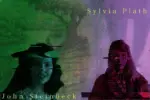A brief survey of the things that I expect to see on Instagram stories: dog pictures, Spotify screenshots with glittery “Mood” stickers, inside jokes I don’t understand, someone’s wild Saturday night, memes and copious use of the SuperZoom tool. One thing that I don’t expect to see on Instagram stories: actual stories, specifically classic literature. But this fall, the New York Public Library is bringing exactly that to the platform.
On Aug. 22, the library’s Instagram account uploaded the full text of Lewis Carroll’s “Alice’s Adventures in Wonderland” to their Instagram story, augmented with bits of modern animation from illustrator Magoz that matched the text. The book is the first installment in the library’s series of “Insta Novels,” which were created in a partnership between the library and hip New York ad agency Mother. Next, they plan to give the “Alice” treatment to Charlotte Perkins-Gilman’s ultra-creepy short story “The Yellow Wallpaper” and Franz Kafka’s “Metamorphosis,” pairing with new designers and illustrators to bring the stories to life.
The choice to upload the 26,432 words of “Alice” to Instagram feels unwieldy, but the product is surprisingly intuitive and fun to use. It’s like an e-book infused with a little bit of interactive magic, featuring extended animations at the beginning of chapters and occasional characters floating in and out of pages. Viewers only need to view the story as normal, holding down their thumb in the corner of the page as they finish reading the page and then lifting it when they are ready to proceed to the next section of text. There is a helpful cut-out section so errant thumbs don’t block the text, and the Story is preserved past its usual 24-hour expiration by sitting in the “Story Highlights” of NYPL’s account, so it can be re-read at any time.
In their initial press release, NYPL described it as “a reimagining of Instagram Stories to provide a new platform for iconic stories” that “aims to make great stories available even more widely.” The first three stories chosen for this program represent that well, as they are all engaging, short pieces that could feasibly be read in one sitting and can lead readers toward other books. All three also deal with themes of transformation, reflecting the change that NYPL hopes to affect in the Instagram experience: mixing the fun and novelty of the average Instagram story with the intellectual weight of a well-crafted piece of writing. As more books are given the Insta Novel treatment, it’s possible that the NYPL highlight section will become a bookshelf of instantly accessible classics.
Although much of the marketing materials around Insta Novels emphasize their capability to get children and young teens to read, I am selfishly excited about the prospect of easy, fun access to classic novels. I’m always dogged by the feeling that the time I use flipping through Insta Stories or skimming yet another Vice article could be used reading, you know, an actual book. Sure, the Kindle app is always there, and my public library membership allows me to download most e-books for free, but (and I completely see how whiny this sounds) it’s just too hard! Millennial life is hard! Help me!
In all seriousness, NYPL’s project does represent an evolution in literature made to be read on smartphones. It’s an area that several artists have tried to crack into. Google Creative Lab has an office exclusively dedicated to creating things like a book built in the blockchain; three British universities are collaborating to make Ambient Literature, which personalizes stories using the reader’s GPS and weather data; and Japanese readers have been reading cell phone novels for at least 10 years. None of these forms have really caught on, at least in the English-speaking world, but Insta Novels, a well-designed reading experience on an app that people already use, might be the innovation that changes this pattern.
Americans clearly want to start reading again, as the growth in independent bookstores and steady rise in print book sales attests, and the recent boom in audiobook consumption makes it clear that even while we live tied to our phones, we have a deep desire for books that we can integrate into our digital lives. Perhaps the New York Public Library, which has been pushing for public literacy and knowledge for over a century, will be the ones to fulfill that need, complete with cute cartoons.

















